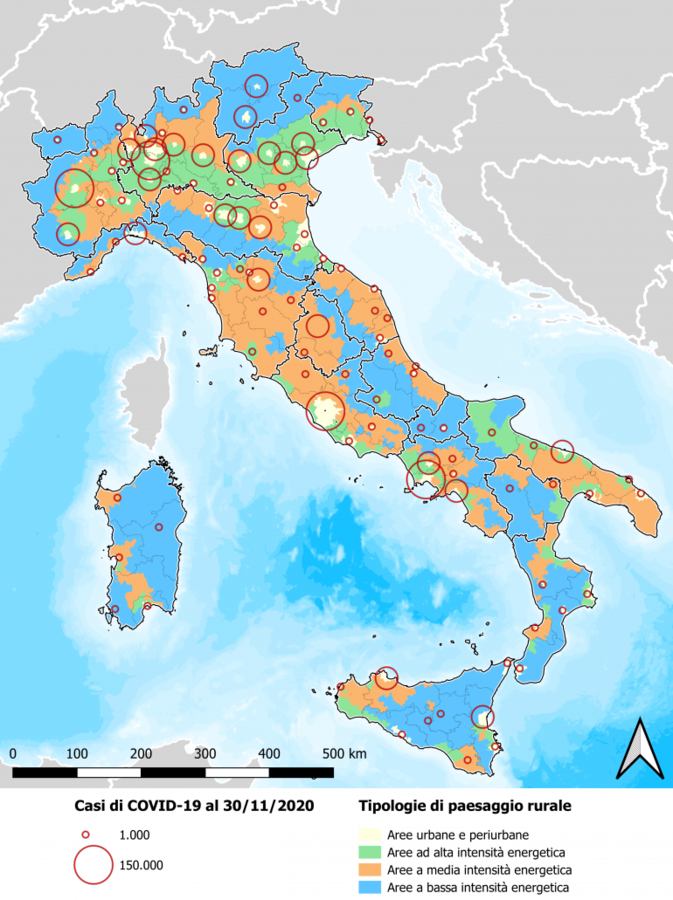University of Florence conducts research about the pandemic and rural development models in cooperation with the European Central Bank (ECB)
For this survey, the Italian territory was first clustered from energy-intensive to low-energy areas. The most populated areas are the urban und peri-urban areas with about 1,510 inhabitants per square kilometres (km²). The energy-intensive areas are also the most densely populated ones with 315 inhabitants per square kilometres. These areas also have the largest share of agriculture business in Italy (38%). The medium-energy areas are home to 29.5% of the Italian population. The low-energy areas cover 45.6% of the Italian territory but are inhabited by only 13.4% of the Italian population.
Data shows that especially the densely populated areas showed more Covid cases. Even though the total difference in numbers per 10,000 inhabitants do not seem high (37 to 28 Covid cases per 10,000 inhabitants), a significant result appears when connecting these to the population rate and high-energy intensity areas. When you connect this data per km², the infection rate is at 134 cases per km² in high population areas and at 49 in less urban areas.
On this basis, Italy can be divided into two macro areas: the densely populated areas with 57% of the Italian population living in only 21% of the Italian territory, on the one hand, and the weakly populated areas with 43% of the population living in 79% of the territory on the other. The results of the study indicate that Italy needs to rethink development strategies to revitalise rural areas and counter economic recession especially in the South of Italy.

